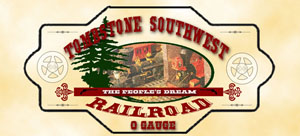I know it's not very realistic to have a wind farm in early Tombstone, but I had to give it a try. I found some cheap hand cooling fans (they type you see people carrying around in the summer). Only one dollar each at the Dollar Store, so I picked up a bunch of them just for the motors. Took them apart and hooked them up to a small transformer to run in unison. Also built a shell type building to hold them. Here's the fans I used.
These are nice little devices and the motors are great for small projects, if you are interested. After hooking them up with a toggle on my fun board I was able to get them up and running. Here's a short video showing the final project in action.
Hope you enjoyed looking at my little experiment.





